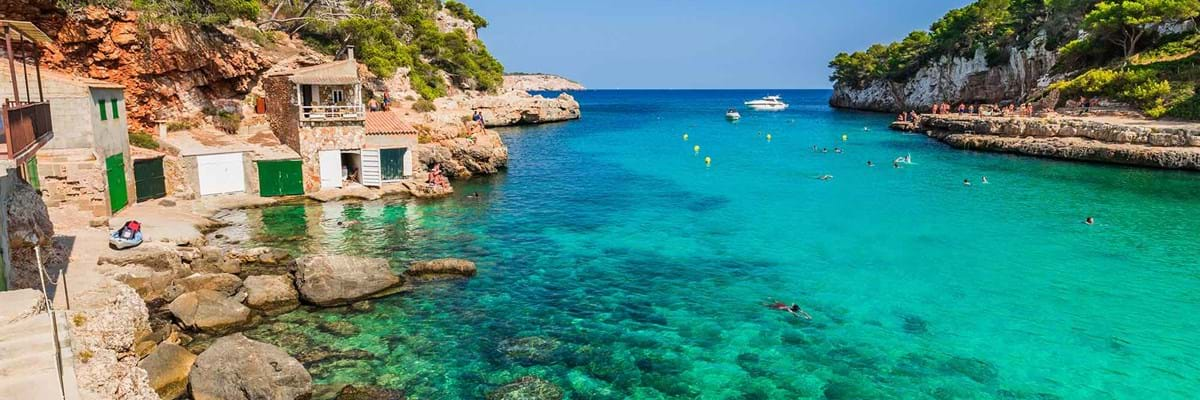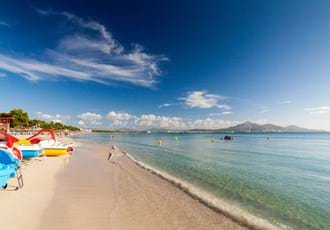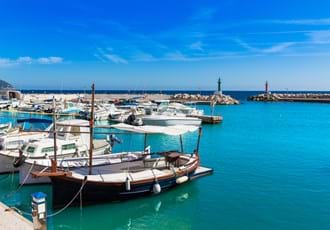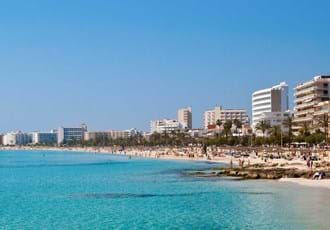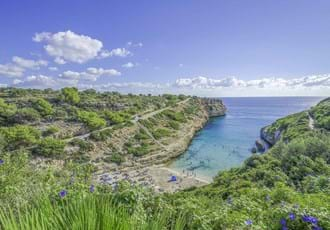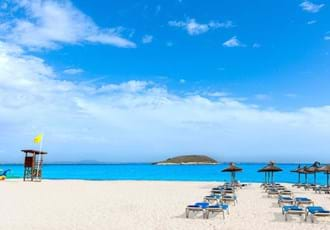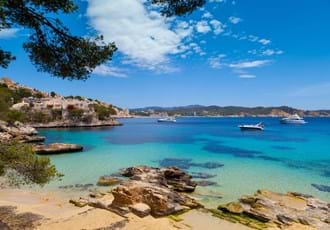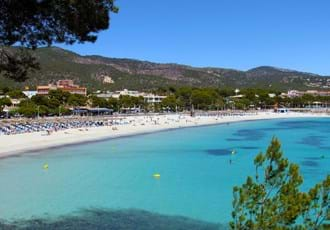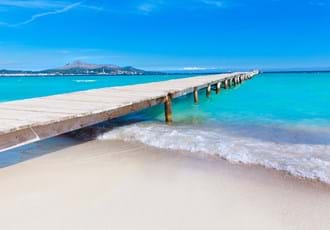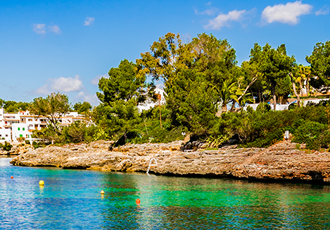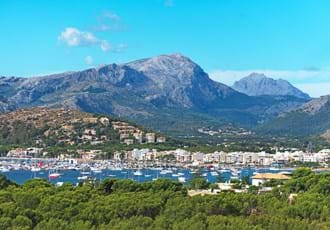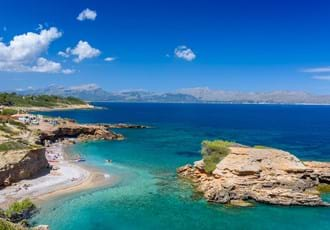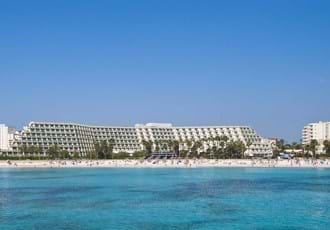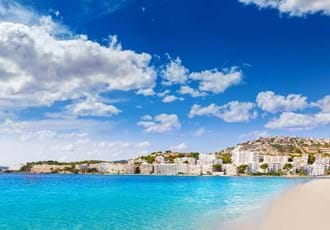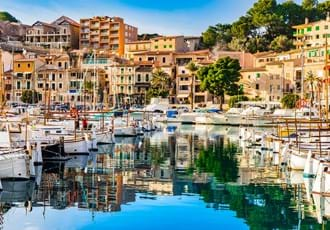Majorca is the is the largest island in the Balearic Islands located in the Mediterranean Sea. Majorca has been a popular tourist destination for many years – known for its gorgeous beaches and warm Mediterranean weather.
Destination Profile
Majorca has long been a destination tourists have flown to. Perfect for those seeking adventure or relaxation. With an abundance of beaches, some say over 200, ranging from long stretches of golden sand to secluded coves, there is a spot for everyone. Majorca also has a highly diverse landscape, boasting a blend of mountains, rolling hills and a gorgeous coastline – giving you something different to explore. Palma, the capital, is a lively city rich in history and nightlife - home to many cathedrals and architectural gems, the most famous being the gothic-designed Palma Cathedral. It is an intricately designed building that is wonderful to explore. Majorca also hosts an exquisite culinary experience with traditional tapas and fresh seafood. Majorca is an excellent destination spot all year round, with mild climates in the winter and up to 30 degrees in the summer.
Best Time to Visit Majorca
Like the marvellous Majorcan attractions, the Mediterranean climate is also perfect for holidays. In June, July and August the sun will be shining all day, the average temperature will be in the mid-20s Centigrade and rain will be so rare it’s hardly worth mentioning. The hottest part of the day is likely to see the thermometer creep above 30 degrees.
In May and September the average temperature will be plenty high enough to spend hours on a beach most days. There could be a bit of rain. The island enjoys mild winters, January and February still have about 170 hours of sunshine per month. The wettest months are in the autumn and winter.
There are festivals and other events in Majorca all year round. All the towns and villages celebrate their patron saint’s day with music, dancing, processions and services. Here are some of the highlights:
Carnivals are held across the island early in March and just before the start of Lent. The main event is in Palma where there are carnivals for children, in the morning, and adults in the evening. The carnivals are followed by a huge fun fair that opens every day until Easter.
Majorca Travel Advice
Car hire. One of the best ways to explore Majorca’s huge number of attractions is by car. The extensive road network is generally well looked after, and signage is good. There are numerous car rental businesses in every resort. You must be at least 21 to hire a car. Driving is on the right. Parking zones are designated by blue lines and some zones have meters. There’s a mobile phone app for blue zone parking in Palma.
Buses. The island-wide bus services are praised for their reliability, cleanliness and reasonable prices. They call at most resorts, towns and villages. There are bus stations in Palma, Inca and Manacor. The Majorcan Transport Consortium (CTM) has a comprehensive web site which includes bus stop locations, times, fares and a route map. There’s an English translation.
Trains. There are two train routes, both starting from Palma. One runs through the mountains to Soller and goes in 13 tunnels, across a long viaduct and through such beautiful scenery it has become a favourite excursion for visitors. A tram then continues the journey to the coast and the Port of Soller. The other train route goes across the central plains to Inca. More details on the CTM web site, referred to above. There’s also a metro service between Palma and the university.
Taxis. They’re common in the towns and resorts, less so in more rural areas. If there’s a green light showing on the roof they can be flagged down. The cabs can hold up to seven passengers. Fares are all controlled and metered. A list of charges and supplements will be displayed in the vehicle.
Water taxis. Lots of resorts have them. Some provide a bus-style service between resorts others will take customers to more secluded beaches and coves.
Boats. They can be rented in the busier resorts and a variety of types are available - small motorboats, speedboats, sailing boats. They are popular because they enable customers to explore the coastline at their own pace. Luxurious yachts, with a captain at the wheel, can also be hired!
Bikes. Majorca has a reputation as one of the best road cycling destinations in the world. The added attraction is the wide range of cycling routes which makes the island suitable for novice riders as well as professionals. There are the toughest mountain challenges and off-road coastal paths perfect for family outings. Unsurprisingly there are numerous places where you can rent all kinds of bikes. There’s a free bike hire service available in some Palma car parks. It’s called Aparca y Pasea and full details are online.
Why Palma was voted best place in the world
It has a captivating old town, a trendy nightlife quarter, great shops and restaurants, an enormous cathedral, ancient castle and a royal palace. Palma, the capital of Majorca, really does live up to its nickname of the pearl of the Mediterranean. Read our article about Why Palma was voted best place in the world.
Where to stay in Majorca




















Date last updated:



